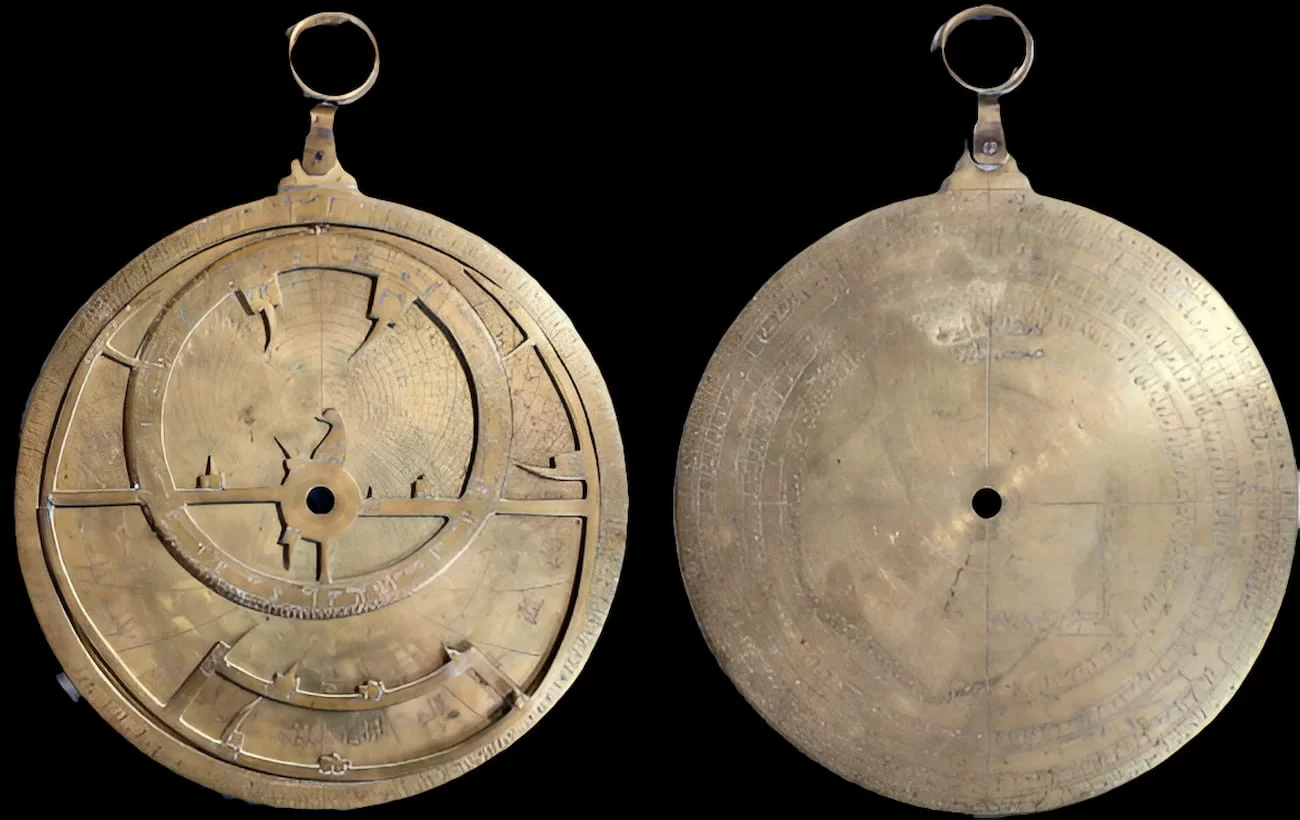Discovery of Astonishing 1,000-Year-Old Celestial Tool
According to a recent study led by historian Federica Gigante from the University of Cambridge, England, and the Italian Museum in Verona, a celestial tool originating from Spain serves as powerful evidence of international cooperation in cross-border and cross-cultural science dating back 1,000 years.

An Ancient Celestial Tool
Dating back to the 11th century, this circular brass instrument, known as an astrolabe, likely traveled across different lands and passed through numerous owners, as reported by Science Alert.
Astrolabes are instruments used to chart the sky and have been utilized by humanity for centuries. They consist of a sky map and a system of rotating parts, allowing users to calculate specific positions in space and time.
Cultural and Scientific Exchange
The oldest known astrolabe was discovered in Greece, but it was the Muslim scholars who improved and optimized this instrument.
This particular astrolabe is evidence of scientific exchange between Arab, Jewish, and Christian cultures.
The inscriptions on the astrolabe indicate that at least three different users felt the need to add translations and modifications to better align the object with new knowledge. Two of them used Hebrew, while one used a Western language.
Origin and Accuracy
The original craftsmanship of this astrolabe aligns with other known astrolabes originating from Al-Andalus, a Muslim region in Spain during the 11th century. The initial inscriptions on it are also in Arabic.
The initial star coordinates on this astrolabe match those of other contemporary celestial instruments.
A Rich Cultural History
The engravings on this artifact tell a story of a rich cultural history. Some Arabic lines are prayers, while others mention the owner as Isãnq and the craftsman as Yũnus.
Additional Hebrew inscriptions include translations of star clusters and some astrological knowledge. Furthermore, another individual adjusted the latitude on both sides of the measuring tool using Western Arabic numerals, which are the Latin numbers we use today.
This astonishing discovery showcases the interconnectedness of cultures and the remarkable advancements in scientific knowledge that occurred centuries ago.
For more intriguing stories and news about finance and economics, visit Business Today.
